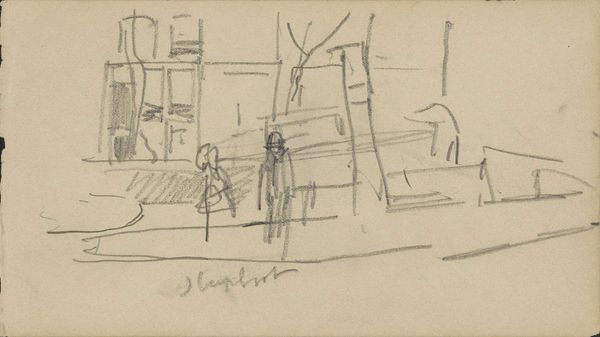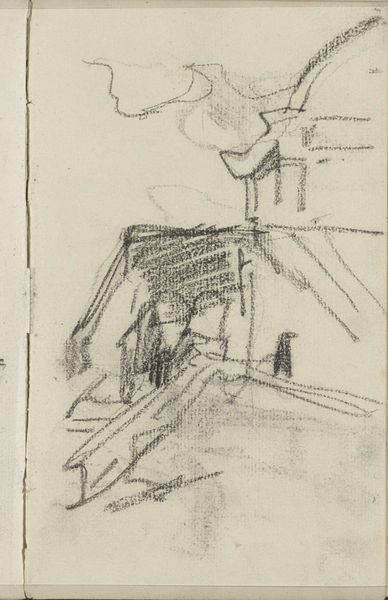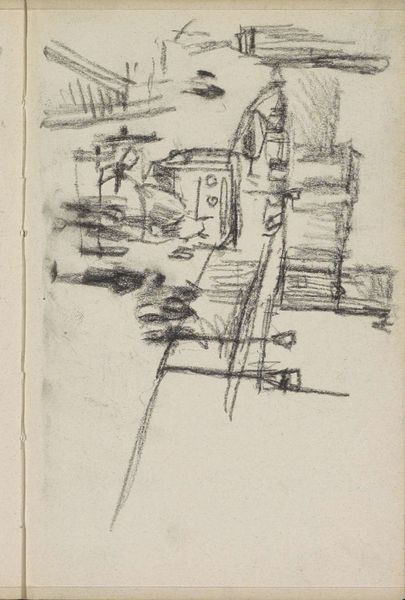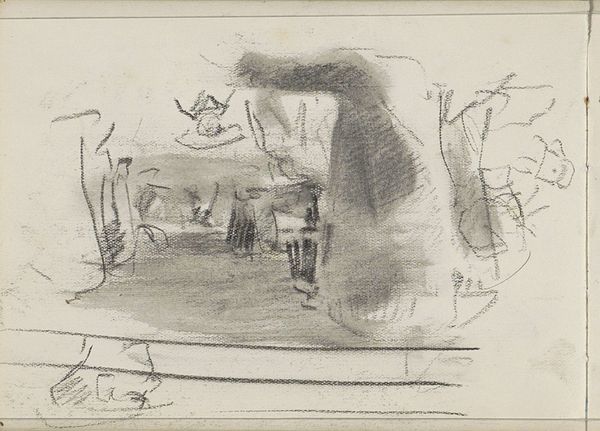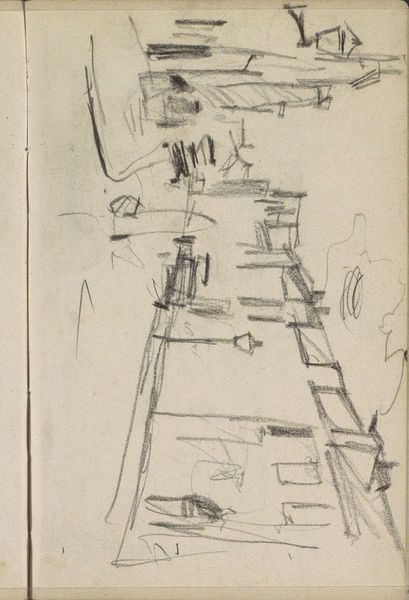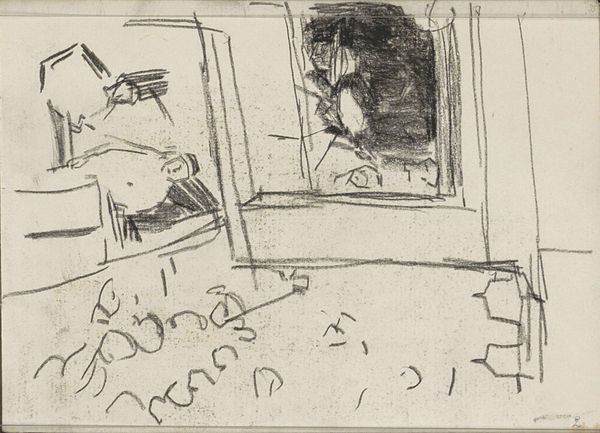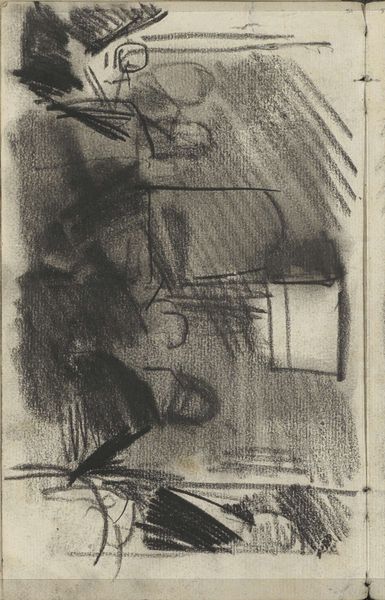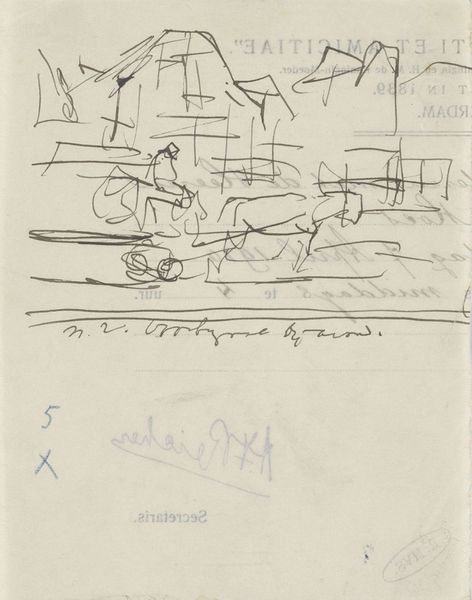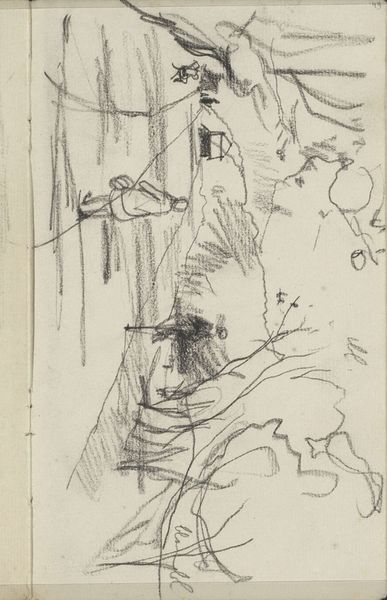
Gezicht op het Spui te Amsterdam met rijtuigen c. 1886 - 1903
0:00
0:00
Copyright: Rijks Museum: Open Domain
Editor: Here we have "Gezicht op het Spui te Amsterdam met rijtuigen," a pencil and graphite drawing by George Hendrik Breitner, made sometime between 1886 and 1903. It's a quick sketch, almost ghostly. I am wondering about the loose composition – what do you make of it? Curator: It’s fascinating how Breitner uses line here, isn’t it? Observe how the graphite doesn't define forms in a conventional manner, but rather suggests movement and the transient nature of the urban environment. What is the impact of that choice? Editor: It makes it feel unfinished, more about capturing a feeling than depicting reality perfectly. The carriages aren’t clearly defined, just hinted at. It makes me wonder, what exactly did he want to show through an emphasis on these particular fleeting moments? Curator: Indeed. It pushes us to consider the intrinsic qualities of the lines themselves, their weight, their direction, their contribution to the overall structural integrity, or perhaps *lack* thereof, in the image. Are these preliminary explorations of form, a concern with the geometric solidity? Editor: It's like he’s dismantling the traditional cityscape, reducing it to its most basic elements of line and form. What strikes me, then, is how radical a departure this is from more conventional landscape drawings! It focuses entirely on representing subjective feeling and momentary visual perception. Curator: Precisely! Note that this is in line with certain late 19th century preoccupations. Do you now detect any connection to related experimentation in poetry? Editor: I do see now the connection to impressionistic verse – I was overlooking the intentionality behind the sketch’s incompleteness. It serves to convey a feeling more than a representational depiction. Thanks, I learned so much! Curator: The pleasure was mine. Thinking structurally, materially, brings out important themes.
Comments
No comments
Be the first to comment and join the conversation on the ultimate creative platform.
